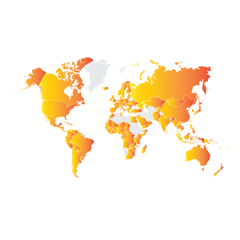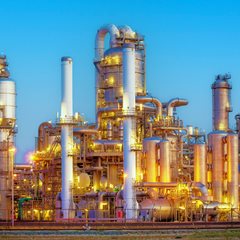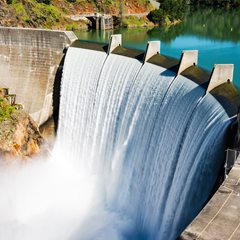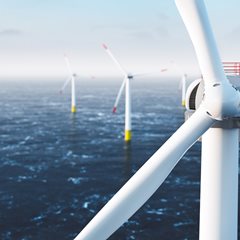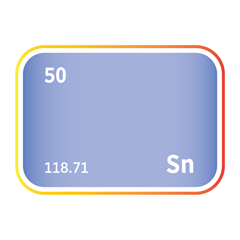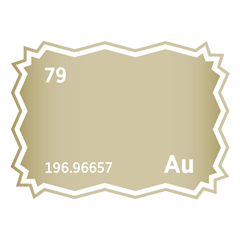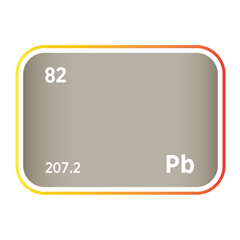Taiwan
Critical minerals, policy, and the energy transition
The Energy Transition in Taiwan
Taiwan is a global leader in semiconductor manufacturing and a key player in the high-tech industry, leveraging its abundant natural resources to support its technological prowess. While the country’s primary focus has been on semiconductors, it also plays a strategic role in the production of essential minerals, including gold, lead, and copper. These minerals are critical for a range of industries, particularly in electronics, energy storage, and clean technologies. Taiwan’s energy mix includes a balance of petroleum, natural gas, and increasing renewable sources such as solar and wind, aligning with global clean energy trends. Taiwan’s expertise in critical minerals such as gold and lead, alongside its cutting-edge semiconductor production, positions the island as a key contributor to the global energy transition and technological innovation. Taiwan is also focused on expanding its resource extraction while adhering to ESG standards, ensuring sustainable growth. As a leader in chips and critical minerals, Taiwan is central to the world’s clean-energy and advanced-technology transition.
A Strategy for Mineral Security and Low-Carbon Growth
From chips to grids, Taiwan is positioning itself at the forefront of the global energy transition. Its approach is a blueprint for mineral and energy resilience, coupling rapid renewable build-out and critical-minerals diversification with technology leadership and clear climate law. The Net Zero 2050 pathway and the Climate Change Response Act provide the statutory backbone, while industry anchors in semiconductors, power electronics and advanced manufacturing create the capacity to deliver at scale.
Taiwan’s strategy for critical minerals and clean energy is tightly linked to alliances with the United States, the European Union, Japan and other trusted partners. These relationships help secure refined inputs and separation capacity outside China, align standards on traceability and recycled content, and open channels for joint R&D in areas such as rare earth magnet recycling, advanced packaging materials and hydrogen. International cooperation also extends to resilient communications, where multi-constellation satellite trials and plans for a domestic low-Earth-orbit capability support continuity of power, finance and emergency services.
At home, robust policy frameworks knit the transition together. Carbon-fee mechanisms, five-year emissions targets and market reforms for storage and ancillary services work alongside procurement regimes for offshore wind, solar, geothermal and grid modernisation. Parallel programmes for hydrogen and CCUS move from pilots toward commercial models, while circular-economy rules and technology transfer in urban mining build local supply of high-purity metals used in magnets, batteries and electronics.
The transition is not without its tests. Taiwan must upgrade transmission, ports and interconnections to integrate larger offshore wind and distributed solar, and accelerate permitting for land-constrained PV and geothermal. Energy security remains a central vulnerability given high import dependence for LNG and coal, which raises the importance of storage, demand response and firm low-carbon power. Policy stability and predictable localisation rules are needed to keep investor confidence high. Finally, geopolitical risk in the Taiwan Strait underscores the value of diversified mineral supply, communications redundancy and a whole-of-society resilience posture.


The minerals squeeze and posturing resilience
Global midstream processing remains heavily concentrated in China. Recent export controls on gallium, germanium, high-purity graphite and selected heavy rare earths have reminded boardrooms how quickly compliance costs and lead times can change. Even when restrictions ease, firms tend to lock in diversified offtakes and add price-reopener clauses, which raises working capital needs and shifts bargaining power towards non-Chinese projects.
Taiwan now has a legal framework for decarbonisation. The Climate Change Response Act enshrines the 2050 net-zero goal in law, introduces carbon fees and five-year target cycles, and assigns responsibilities across ministries. The 2022 Net-Zero Pathway turns that mandate into twelve strategies spanning power, industry, hydrogen, CCUS and the circular economy. Together, these measures give regulators the tools to price carbon, fund demonstrations, streamline planning and align central and local decision-making. The result is less permitting friction, a lower cost of capital, and a grid and port system ready for the build-out to come.
Power-sector targets are stretching but provide a clear signal for investment: offshore wind to 13.1 GW by 2030 and 40 to 55 GW by 2050; solar towards 30 GW by 2030 and 40 to 80 GW by mid-century; and storage scaled through Taipower’s trading platform so public and private batteries can provide frequency response and energy shifting. Upgrading interconnections, substations and ports is the practical hinge that allows new wind and distributed solar to connect on time. Because infrastructure choices set the metals bill, these plans also shape the volumes of copper, aluminium, steel, glass and battery-grade materials that must be secured or recycled domestically.
Taiwan is reducing supply chain risk while keeping trade open. At the same time, it is shifting the riskiest inputs to trusted partners. Trade in finished goods continues, while exposed inputs such as rare earth separations, magnet metals, battery materials and certain gases are being moved into trusted networks with the United States, the European Union, Japan and others. This includes offtake agreements and joint ventures for separation and recycling capacity in trusted jurisdictions, alignment on traceability and recycled content to meet EU and US rules, and exploratory partnerships with resource holders such as India to link deposits with Taiwanese processing and manufacturing expertise. At home, resilience is reinforced through a whole-of-society programme for strategic materials and infrastructure readiness, and through communications redundancy from MODA’s multi-constellation satellite trials and TASA’s Beyond-5G LEO plans, so grid control, payments and emergency services can continue even if subsea cables are damaged.
As part of this resilience posture, batteries, recycling and urban mining reduce exposure to upstream shocks.
-
In cells and systems, domestic LFP (lithium iron phosphate) and ESS (energy storage system) capacity is scaling, with large front-of-the-meter systems entering ancillary markets and a widening base of local integrators for cabinets, PCS (power conversion systems) and EMS (energy management systems). Parallel investments, Foxconn’s EV battery build-out and ProLogium’s European project, add chemistry options and expose engineers to automotive-grade processes, improving quality and uptime at home.
-
Taiwan’s first dedicated LiB (lithium-ion battery (lithium-ion battery) plants use safer discharging and hydrometallurgy to recover lithium carbonate and nickel and cobalt sulphates at the quality needed for cathode precursors. As feedstock from consumer electronics and ESS grows, fee design and standards will shape volumes, while closed-loop contracts with cell makers and integrators convert recycling from an environmental good into a real hedge against upstream volatility and foreign exchange risk.
-
In precious and rare metals recycling, key players such as Solar Applied Materials and peers refine indium, gallium, ruthenium and PGMs (platinum-group metals) to 4N–6N purities, 99.99 to 99.9999 per cent, using pyro and hydro routes, while companies such as Lianyou Metals have built competitive recycling for tungsten and cobalt from industrial scrap. High-purity urban mining shortens logistics, strengthens sustainability claims and supplies sputter targets, catalysts and materials used across semiconductors, magnets and power electronics.
-
Permanent magnets, magnets that retain their magnetism without power, used in high-performance motors rely on small amounts of heavy rare-earth elements, such as dysprosium and terbium, to stay strong at high temperatures, so supply security hinges on these metals. The most robust arrangements combine separation and recycling in trusted jurisdictions, with ten-year offtake agreements, long-term purchase contracts, for dysprosium and terbium tied to financed separation and recycling hubs. Taiwanese buyers can plug into these flows to reduce single-country exposure, while expanding domestic magnet finishing and motor assembly captures more of the value created by secure feedstock.
Semiconductors and advanced packaging
Taiwan’s chip industry was built deliberately over four decades. The government set up ITRI (Industrial Technology Research Institute) and ERSO (Electronics Research and Service Organization) in the 1970s and 1980s, Hsinchu Science Park opened in 1980, and TSMC (Taiwan Semiconductor Manufacturing Company) created the pure-play foundry model in 1987, meaning designers could outsource manufacturing. This cluster approach, one location with fabs (fabrication plants), suppliers, universities, and logistics nearby, lowered costs and sped up learning. Water recycling, ultra-clean utilities (very pure water and gases), and reliable logistics became core strengths, helped by repeated stress tests, for example earthquakes and droughts, which pushed investment in backup power, advanced water reclaim, and dual sourcing. Packaging and testing scaled with the front end (wafer fabrication), OSATs (outsourced semiconductor assembly and test companies) grew alongside materials and equipment vendors, so Taiwan could industrialise each new node and each new packaging step faster than rivals.
Leading-edge chips rely on a globally distributed tool and materials chain. Key equipment comes from the United States and Europe, EUV (extreme ultraviolet) lithography systems are concentrated in the Netherlands, photoresists, mask blanks, and speciality gases have major suppliers in Japan, and high-purity chemicals, silicon wafers, and substrates are sourced from a small set of qualified vendors. Taiwan concentrates a large share of leading-edge wafer fabrication and advanced packaging, so disruption in Hsinchu or Taichung would cascade into servers, automotive, medical, and defence systems. Current pinch points include ABF (Ajinomoto build-up film) substrates, HBM (high-bandwidth memory) supply made by a few firms, high-purity noble and fluorinated gases, and ultra-pure water systems. This concentration makes practical resilience measures important, multi-site qualification, buffer inventories for long-lead materials, second-source tooling and chemistry where feasible, deeper visibility into tier-two and tier-three suppliers, and regular scenario exercises with customers.
On the manufacturing side, process technology continues to set the pace in Taiwan. TSMC’s 2 nanometre, a measure of transistor feature size, moved into mass production in the second half of 2025. Groundwork is under way for the 1.4 nanometre generation, with trial production before mass output in 2028, and land banking at Nanshalun positions for the node after that. This cadence creates long term local demand for ultra clean utilities, very pure water and gases, specialty gases, and high purity materials, which in turn encourages suppliers to localise critical steps and deepen Taiwan’s upstream capability in its signature industry.
For AI systems, the main bottlenecks are now I/O (input and output), memory bandwidth, and thermal budgets (how much heat can be removed). Capacity in CoWoS (chip on wafer on substrate), SoIC (system on integrated chips), and hybrid bonding (direct chip-to-chip joining) has therefore become as strategic as lithography. Pressure points include ABF substrates (Ajinomoto build-up film used in high end circuit boards), high-density redistribution layers (extra wiring on top of chips), HBM stacks (high-bandwidth memory chips stacked vertically), and thermal interface materials (layers that conduct heat away). Industry alliances are aligning tooling, interfaces, and skills (common equipment, standards, and training), and capital is pivoting towards panel-level fan-out (placing many packages on large panels for throughput), hybrid bonding, and glass-core substrates (glass layers that improve signal quality). Because packaging lines and chip tools embed precision motors, optics, and magnets, they draw on neodymium and praseodymium (for strong permanent magnets) and on dysprosium and terbium (for high-temperature stability). Minerals policy and semiconductor policy therefore reinforce one another within the same resilience plan.
The national AI programme links data centre growth to areas where Taiwan is already strong, namely chips, advanced packaging, and power electronics. The shift to silicon photonics (using light to move data on and between chips) tackles the I/O wall and the energy cost of moving data. Co-packaged optics (lasers and optics placed next to switch or compute silicon), photonic interposers (optical layers that link chips), and 2.5D and 3D assembly (placing chips side by side or stacking them) are central to this approach. Closer collaboration between cloud operators, OSATs (outsourced semiconductor assembly and test companies), and power-electronics firms enables co-designed racks, power trains, and cooling from the outset. Clean, firm power is treated as part of the stack. Corporate PPAs for geothermal (long-term power purchase agreements) provide a template for hourly matched 24/7 procurement that suits AI loads, and, combined with waste-heat recovery and careful siting of strong nodes (locations with robust grid capacity), deliver performance gains without over-stressing the grid. The result is an AI platform that is performance-led and energy-aware, and that plans for the magnet, substrate, and optical-component demand it will generate.
Frontier R&D follows the same build-on-strengths logic. Superconducting devices advance alongside control electronics and cryo-CMOS (CMOS that operates at very low temperatures). Photonic quantum at room temperature leverages Taiwan’s photonics and precision manufacturing base. Quantum-safe communications (methods designed to resist quantum attacks), including QKD testbeds (quantum key distribution trials), quantum-grade random sources (hardware that generates true randomness), and secure network pilots, offer nearer-term commercial relevance than universal quantum computing. The pipeline linking NSTC (National Science and Technology Council), ITRI (Industrial Technology Research Institute), and Academia Sinica (the national research academy) is designed to keep results manufacturable and export compliant, so secure communications and sensing strengthen the same infrastructure that depends on resilient power and mineral inputs.
Taiwan treats space and communications as part of its critical infrastructure. Cyber-physical systems, systems that link software and physical equipment, can fail in cascades, so communications redundancy is a prerequisite for energy resilience. MODA (Ministry of Digital Affairs) has tested multiple non-Chinese LEO (low Earth orbit) and MEO (medium Earth orbit) providers and is rolling out emergency satellite hotspots, while TASA (Taiwan Space Agency) and its Beyond 5G LEO programme add a sovereign layer, a capability under national control, to maintain control, markets, and public safety if undersea cables are compromised. Near term priorities include hardening the ground segment (earth-based gateways, control stations, and user terminals), deploying terminals at critical nodes (substations, data-centre gateways, and hospitals), and securing service-level agreements (SLAs) with clear uptime and restoration targets. Over the medium term, domestic spacecraft and launch readiness determine how much autonomy can be brought to bear in a crisis that affects both data and power.
Energy technologies: the next build phase
Taiwan is moving from target setting to execution so projects can be financed, permitted and delivered at scale. The near-term priority is to match each technology choice with Taiwan’s grid constraints, supply chains and domestic capabilities so that cost, reliability and local value all improve together.
Every pathway has its own list of materials, from steels and subsea cables to aluminium frames, glass, copper, semiconductors, batteries and specialised equipment. In Taiwan, clear auction rules, predictable localisation plans and strong recycling routes make it easier to secure those inputs in a tight global market and reduce exposure to import shocks. The sections below set out what Taiwan needs next for offshore wind, solar power, geothermal, hydrogen, carbon capture and storage, and the grid, storage and market reforms that link everything together
-
Offshore wind 2.0 – Fixed-bottom wind farms have already built a capable Taiwanese supply chain, with towers, jackets, nacelle assembly and transformers produced locally. The move into deeper waters around Taiwan will require heavy-lift vessels, extra-large monopiles or floating platforms, high-voltage direct-current links to shore, and upgraded ports such as those serving major wind hubs. Stable auction design and clear localisation expectations from Taiwan’s authorities will shape financing costs, and will determine which steels, cables and subsea components need to be contracted early.
-
Solar PV (photovoltaics) – Rooftop solar is growing quickly across Taiwan and remains the fastest way to add capacity. Growth in ground-mounted projects depends on unlocking land, for example solar above crops and fish ponds in Taiwanese counties, and on clearing the waiting lists for grid connections. Simple environmental and social rules for dual-use sites, predictable connection standards and fair community benefit sharing keep projects financeable and maintain local support. The final mix of rooftop and ground-mount systems in Taiwan will set demand for aluminium frames, glass, copper and switchgear that local firms and recyclers can supply.
-
Geothermal – Taiwan’s geology offers credible baseload potential, although projects only proceed when drilling costs, reservoir performance and long-term power sales are clear. A practical model is taking shape that pairs a long-term corporate power purchase agreement with early-stage equity to spread exploration risk. Closed-loop binary plants, which turn moderate-temperature heat into electricity, can be developed in both volcanic and sedimentary areas and will build a domestic ecosystem for drilling services, pipes, pumps and heat exchangers.
-
Hydrogen – Policy aims for hydrogen to supply around a tenth of Taiwan’s electricity by 2050. In the 2030s most volumes are likely to be imported into Taiwan, using reception and storage facilities that can share logistics with liquefied natural gas, followed by domestic green hydrogen as surplus renewable power grows. Progress in Taiwan depends on clear safety codes, co-firing trials in power and industry, guarantees of origin that match EU rules, and storage solutions that lenders are willing to back. These choices also decide which alloys, valves and safety systems should be sourced or manufactured in Taiwan.
-
Carbon capture and storage (CCUS) – Capturing CO₂ at Taiwan’s cement, steel and petrochemical plants is moving beyond pilots into early deployment. The main constraint is how to move and store the captured gas. Regional shared-storage services, CO₂ pipelines and shipping to suitable offshore basins near Taiwan can unlock near-term emissions cuts while domestic geology is assessed. Clear rules on long-term liability, monitoring and measurement will make contracts bankable and allow competitive procurement of compressors, pipelines, ships and metering systems in Taiwan.
-
Grid, storage and markets – Taipower now runs a market where batteries and other flexible resources in Taiwan are paid to help balance the grid and shift energy across the day. Publishing a firm auction calendar, tightening performance standards and placing storage at known grid bottlenecks will attract more investment and let new wind and solar connect with manageable levels of curtailment, in other words less wasted renewable energy. As storage grows across Taiwan, it becomes the bridge to firm low-carbon power, and it also sets future demand for graphite, lithium and nickel that Taiwan’s recycling and substitution strategies must offset.
Taiwan's energy and power mix
Join us at SFA (Oxford)'s Critical Minerals events
Join us in person or online from Taiwan for SFA (Oxford)’s latest Critical Minerals events, focused on the key materials driving the energy transition and low-carbon technologies. Connect with global leaders, government, investors, miners, end users, and key players across the supply chain and recycling sector, and stay ahead of the trends shaping the battery metals and PGM markets. Register today to secure your place.







Meet the Critical Minerals team
Trusted advice from a dedicated team of experts.

Henk de Hoop
Chief Executive Officer

Beresford Clarke
Managing Director: Technical & Research

Jamie Underwood
Principal Consultant

Dr Jenny Watts
Critical Minerals Technologies Expert

Ismet Soyocak
ESG & Critical Minerals Lead

Thomas Shann Mills
Senior Machine Learning Engineer

Rj Coetzee
Senior Market Analyst: Battery Materials and Technologies

Franklin Avery
Commodity Analyst
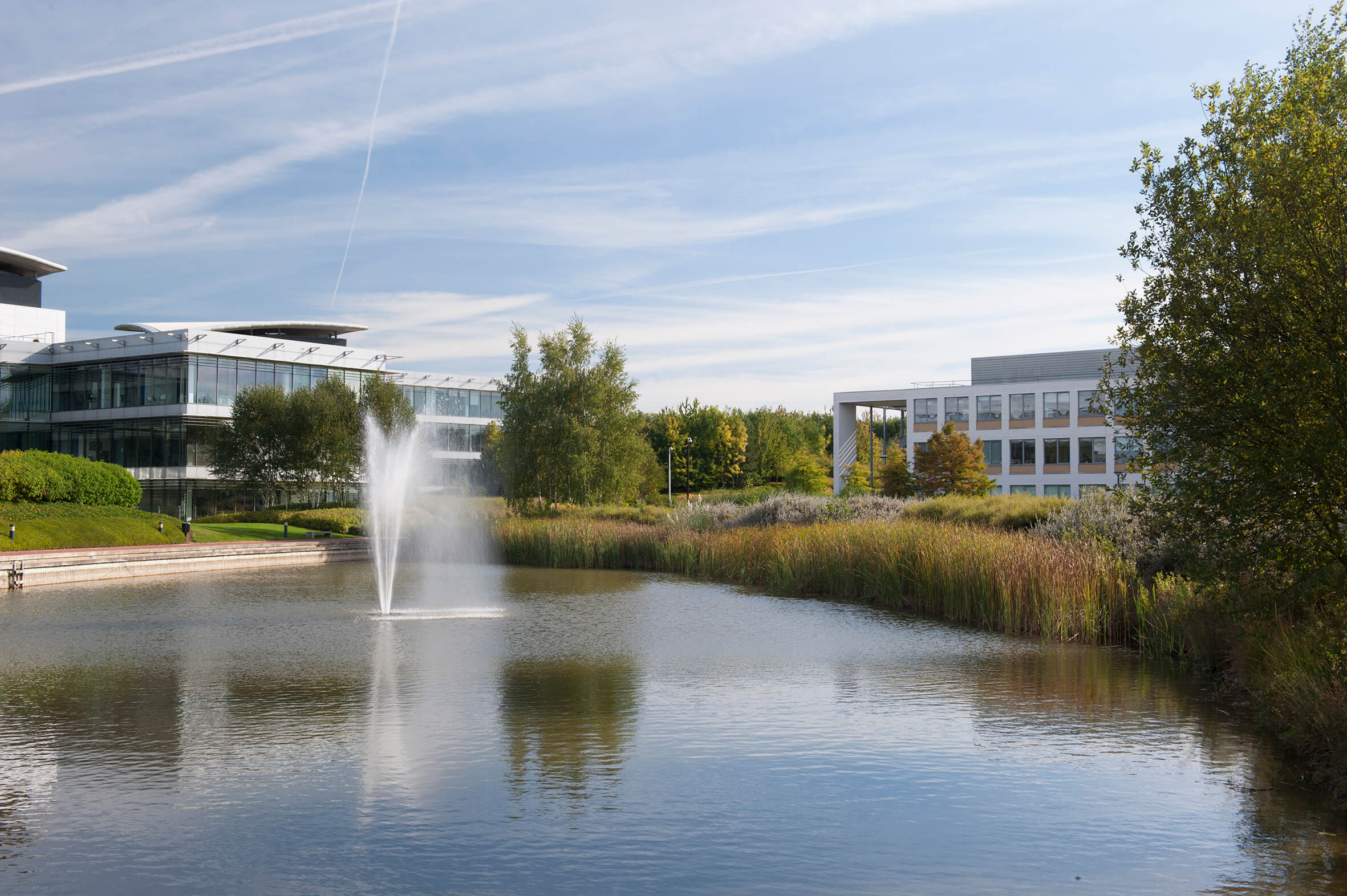
How can we help you?
SFA (Oxford) provides bespoke, independent intelligence on the strategic metal markets, specifically tailored to your needs. To find out more about what we can offer you, please contact us.
